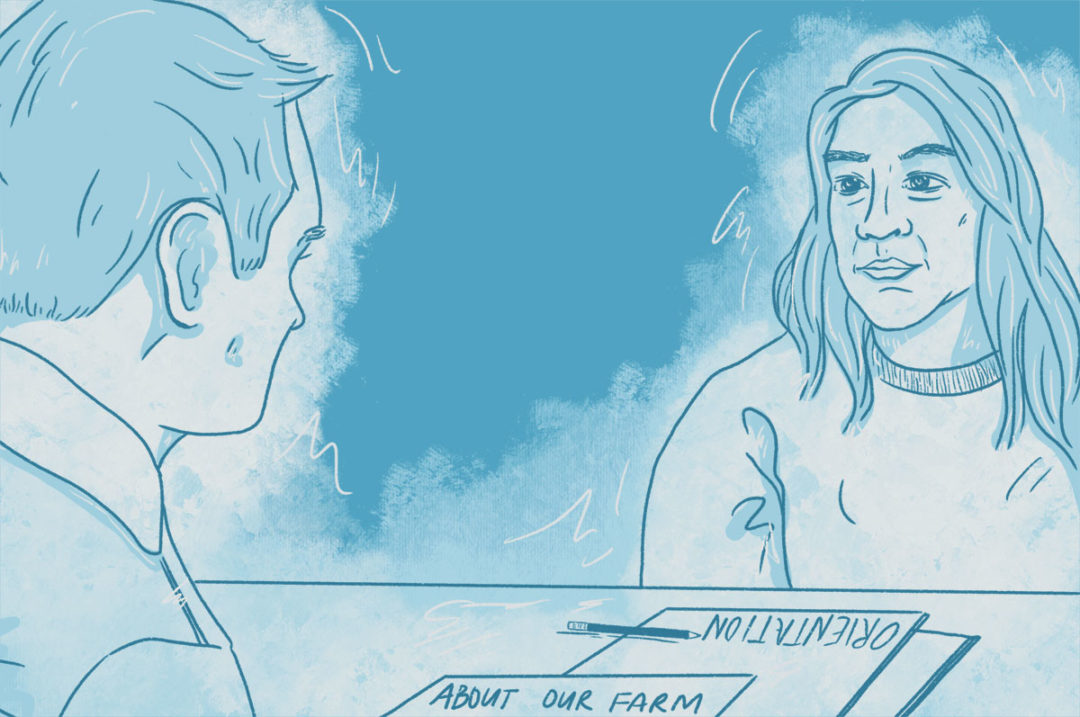To read this article in French, click here.
You just hired a new employee – hopefully a great hire. You hope this employee will be productive and will stay for many years, perhaps even for the duration of their career. How to maximize the probability of the hire staying is the topic of this article.
The process of ensuring a new employee has a great start, becomes engaged and stays is called “onboarding.” Onboarding is more than just orientation and training, which have been the traditional focus for new employees.
In previous articles, we have discussed the cost of a “mis-hire” – wasted compensation, increased required supervisory time, additional performance mistakes/failures, reduced employee/team motivation and greater supervisory stress. In many ways, a poor onboarding process can result in the same costs as a mis-hire. Your excellent recruitment and selection processes have resulted in a hire with a low mis-hire probability. Don’t waste that effort with a poor onboarding process – a “mis-onboarding.”
The Society for Human Resource Management describes onboarding as:
“The process by which new hires get adjusted to the social and performance aspects of their jobs quickly and smoothly, and learn the attitudes, knowledge, skills, and behaviors required to function effectively within an organization.”
Onboarding, then, continues until the employee is acclimated to your vision, mission, core values and farm culture and is successfully performing their job responsibilities. It includes much more than learning the skills and responsibilities of the position.
I understand that expanding beyond your past orientation and training may sound like unnecessary work and time. However, think about the importance of first impressions. They are very important and often very lasting.
In fact, research shows that half of new hires decide they will leave the company, business or organization in the first week on the job. Not all leave immediately and a few probably change their mind and stay, but most leave eventually without ever becoming engaged employees! Or, even worse, they stay but become below-average employees and often the one “rotten apple” on their team.
For a new employee to become a long-term, highly productive, engaged employee requires a three-part onboarding process. The first two, orientation and training, are familiar. The third is new – we will call it “engagement.” The first two are necessary, and the third is crucial to your goal of having passionate, career-oriented employees. We'll look briefly at the first two and go more in-depth with engagement.
Before the employee arrives, you must have a detailed onboarding plan – orientation, training and engagement. Schedule time for yourself and others to connect with the new employee. It is easy to get involved in daily activities and leave the new employee “hanging.”
Additional excellent onboarding resources can be found on the Cornell Agricultural Workforce Development website.
Orientation
You have likely always been a part of your farm. The information the new employee requires in orientation is second nature to you. You will undoubtedly miss many key items unless you have an orientation checklist containing all the items the new employee needs to know to feel comfortable in his or her new surroundings. You can ask your newest employees to help develop the checklist and add to it over time.
Training
You or the new employee’s supervisor are the training experts. My only suggestion is that you be certain to explain why tasks are performed the way they are. This explanation will enhance the new employee’s comfort level, confidence and engagement in the tasks and the farm.
Engagement
The more we learn from modern research about how to lead and coach employees, the more we understand that the most productive, easiest to supervise and longest-tenured employees are those that are passionate about the farm’s success. They work because they want to, not because they have to.
Onboarding to create passionate employees requires your leadership and coaching from day one. In fact, engagement, and thus onboarding, starts with recruitment and selection as you select candidates who are a “fit” for your vision, values and culture.
We look at three components of onboarding for engagement.
- The first is to be certain the new employee quickly learns about your farm. Include the following in the ongoing discussion of your farm:
- Continually discuss and use the farm's vision, mission and core values.
- Talk about the history of your farm, including the founders.
- Share the traditions, symbols and meaningful events important to the formation of the farm culture.
- Share your hopes and dreams for the future and some of the strategic moves you have planned to fulfill those hopes and dreams.
- “Chalk the field,” which means providing clear instructions, tasks, plans and expectations. Although it is always important, clarity is especially important for the new hire.
- The second is helping the new employee build strong relationships with every member of your workforce. Back in the “old days” of supervision, friendships at work were frowned upon. Today’s research contradicts that idea. In fact, the Gallup engagement research finds that having a “best friend at work” is highly positively correlated with employee engagement.
- Begin by introducing your new employee to your workforce.
- Use your knowledge of the new employee to suggest common interests.
- Monitor progress to be certain the new employee is being assimilated into the workforce.
- Consider identifying someone – let’s call him or her a “buddy” – who the new employee feels comfortable going to with concerns or issues. This person could be you (the owner), his or her supervisor, the person who recruited the new employee to the farm or just an engaging member of the current workforce.
- The third component, passion, builds on the first two. Passion takes time to develop but is easily “snuffed out.”
- Start by showing your own passion. Most of us, especially us males, struggle to show our emotions. This is a good time to overcome that reluctance and let your passion for the farm show through. This may be difficult, but it is important you step up to this challenge.
- It is not too early to talk about opportunities for the new employee to grow and advance his or her career at your farm. Since he or she has just been in the job market, career plans have likely been in his or her thoughts. Connecting early with possibilities will likely increase their passion for your farm.
Onboarding success ideas
Two concluding suggestions to successfully implement the three components of onboarding are:
- Reprioritize the first week. Since you may have had an open position for some time, you will want the new employee to start working right away. However, onboarding is a marathon, not a sprint. I suggest the priorities for the first week should be:
- Orientation
- Engagement
- Training
- Performing job tasks
- On the new employee’s first day, explain that you (or his/her supervisor) will meet with him or her weekly at a set time with the only agenda item to discuss progress in the onboarding process. I suggest starting each meeting with two questions:
- “What is going great?”
- “What could be going better?”
A final note regarding exceptional new hires. Too often, it is assumed that exceptional hires are smart enough to figure things out on their own. This is a dangerous assumption! Exceptional new hires come with high expectations, and it is imperative that you meet and exceed those expectations from the beginning.







